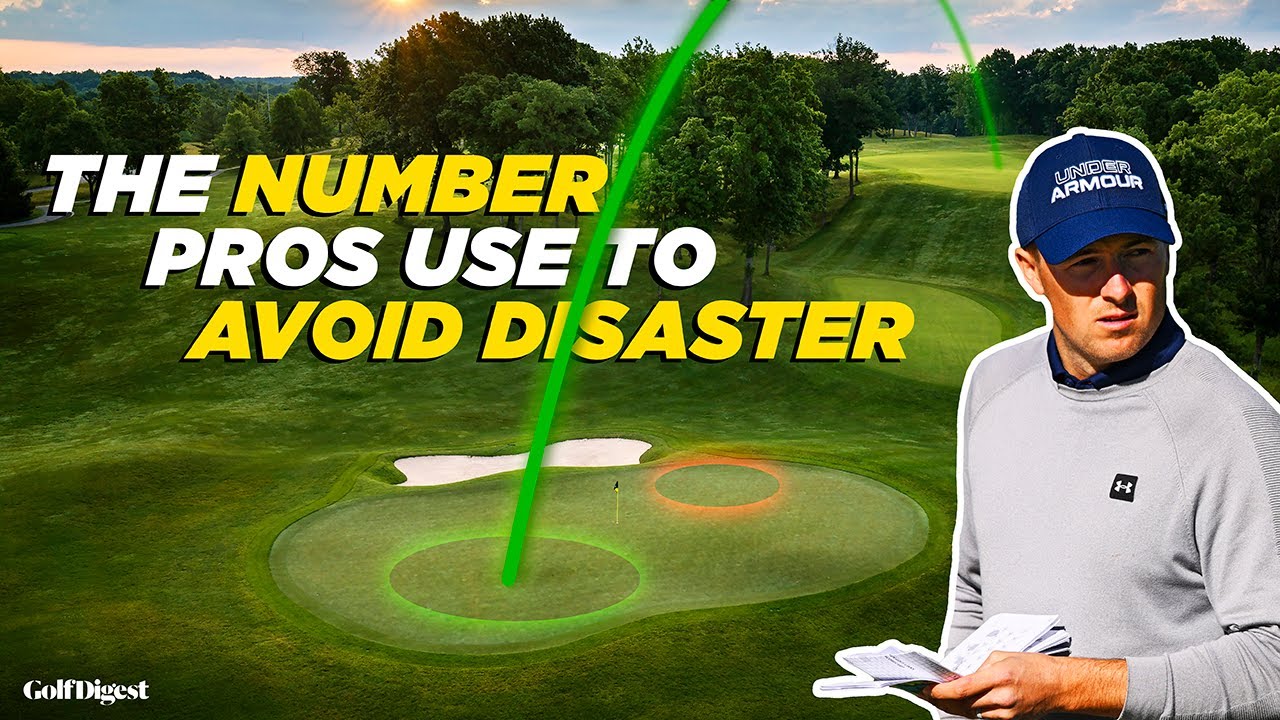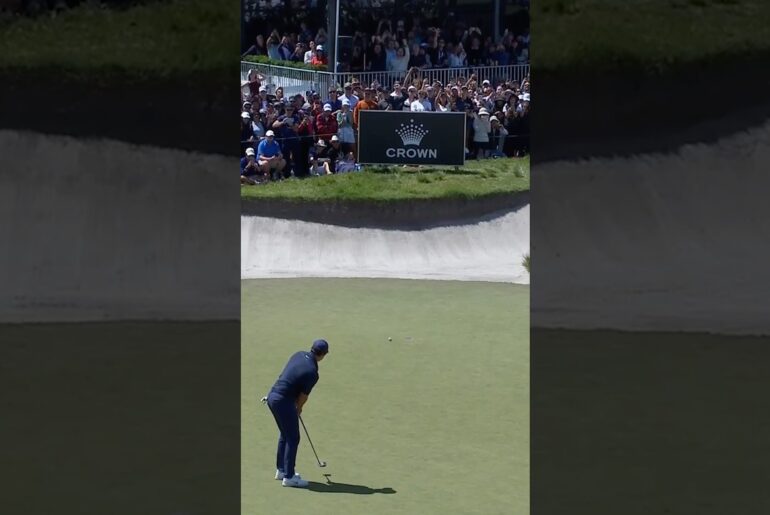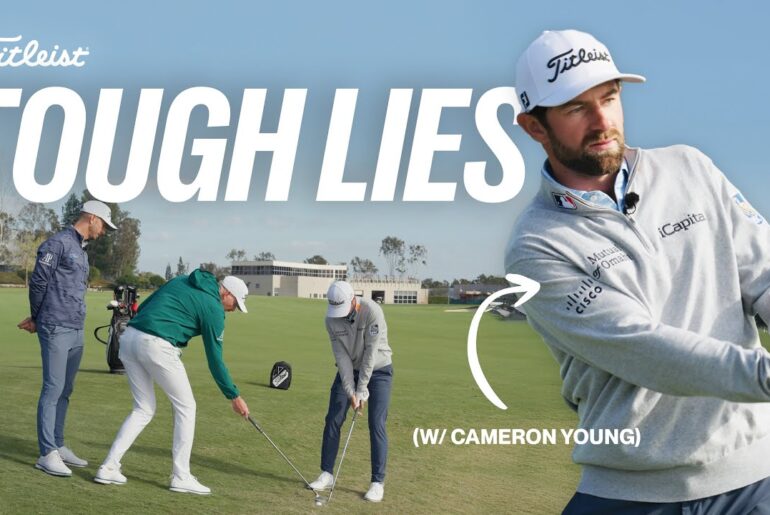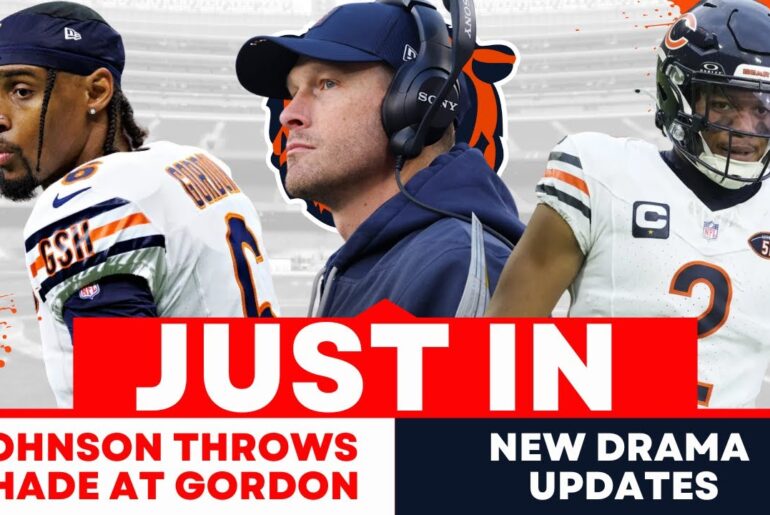Cover Numbers. They’re some of the most underrated and underused numbers in golf. What’s the yardage to clear the hazard? What club should I hit? How do I avoid disaster on this hole? In this episode of The Game Plan, Golf Digest Senior Editor Luke Kerr-Dineen dives into the simple but often underutilized strategy of ignoring the pin and focusing on safety to discover whether or not those aggressive lines off the tee and into greens are actually worth the risk for pros and amateurs alike.
We want to know – have you tried focusing on cover numbers?
Be sure to like, subscribe and comment, letting us know what you think!
Still haven’t subscribed to Golf Digest on YouTube? ►► http://bit.ly/golfdigestyoutubesub
Want even more GD? Grab a Golf Digest + membership ►► http://glfdig.st/mFqM50OXuv4
ABOUT GOLF DIGEST
Home of the Hot List, Golf Digest +, news and trends, Golf Digest is the definitive destination for all things golf.
have you ever looked at a professional golfer before they hit a shot especially before an important shot there are times when it looks less like they’re playing a game and more like they’re cramming for an important test they have papers and books levels before they got banned and even the occasional protractor spoiler those got banned even these wheel measurement things used to make an appearance at some point you may have asked yourself what are those guys looking at well they’re looking at lots of different things lines and angles and numbers and options a bit like a consultant trying to figure out what the next best move is for their business but Above All Else they’re looking at a number one number one really important number one number that makes all the other numbers make sense it helps make their bad shots look better and their good shorts look great it masks their mistakes and Pros they trust this Above All Else and it’s a number that you should trust to and use because it’s one of the easiest and quickest ways to strategize your way to playing better golf two is not going to cover those trees perfect three-wood for me to cover the right edge of that bunker 235 to cover the water I can hit my cut and cover kind of the corners of the Trap I pulled it I felt like at least was going to cover the water did you hear that word cover cover cover cover the water it’s probably the most important thing they think about before every approach shot they hit and the way they make sense of it is through something they call a cover kn number the cover number is the number that it takes to clear the most severe Hazard guarding the green usually these hazards are in the front of the green because what’s the point of putting something scary Behind the Green where nobody knows it’s there some golfers assume that the cover number and the number to the front of the green is the same but that’s wrong and not true I’ll explain why in a minute as for why Pros care so much about them well it’s because cover numbers are a kind of insurance policy as a right-handed golfer you want to know what it’s going to be if you pull it left you know you want to know what it is to carry yeah if you’re in between clubs you want to make sure that if you do hit a bad one you’ve got enough to get over the water so yeah a cover numers is important to know uh when you when you decide on a club that’s why they think about them before every shot they think of the absolute worst place they don’t want to hit their ball and then they pick a club they know will clear that spot even if they hit a pretty bad shot they know it will probably end up in a decent spot if they get their cover number right in most basic terms what is a cover number You Know cover numbers when it comes to what I do I would say are one of our big two we have cover numbers and we have runout numbers so you know when we get a number in our yardage book we’ll have a front number we’ll have 120 Front pens 140 that front number is very rarely used that would only be to kind of like a front pin what we’ll use is a cover number so that’s the number he’s going to hear for me hey we got 133 cover 140 pen and so immediately it ignites the brain that 120 is a use useless number 133 is what we’re dealing with to cover the bunker and then 140 pen the pen is almost a secondary number for most tour players tour caddies um it’s more about hey what’s our cover where are we trying to land it and what is Longs you know like the pen is almost not even something you’re discussing a lot of the times to understand how to use cover numbers to your advantage like the pros do you have to understand dispersion patterns if you watched any of these videos you’ve probably become familiar with that concept for right-handed players dispersion patterns generally look like this a long oval slightly tilted on its axis off the te Pros aim in a way that manages their side to side dispersion but interg greens Pros start caring a little bit more about front back dispersions because their side to side misses aren’t quite as severe what does that look like well from 150 yards Pros miss most of their shorts between seven yards long or short of their target five handicaps for reference average about 10 yard short or long of their target so let’s say you’ve got a nice normal round or overl shaped green like the 12th hole at Valhalla pretend the pin is slightly short of the middle and you’re 173 y away from that pin the cover number the number to clear that bunker short is 168 y from 175 yards a five handicap has about a 13 yard average short Miss buffer that they need to account for which means they need to hit a club that travels at minimum 168 yards on a Miss hit in this case that means hitting something like your 180 yard Club because that’s what leads your short misses covering that front bunker your average shots with a potential birdie look and your long misses in a pretty easy not shortsighted spot the number to the pin itself becomes irrelevant it’s the number to cover that matters but that’s an easy example because of course most greens aren’t nice normal and roundish on most courses you’ll find lots of asymmetric greens and hazards that aren’t squarely in front of the green but rather off to one side that’s when calculating the cover number gets really difficult but really important one common green shape you’ll often see is like this where the green is a kind of upside down L with a protecting Hazard either short left or short right you see them everywhere when the pin is tucked in the back corner it creates a situation where the cover number to clear the bunkers is actually longer than the number to the middle of the green so again the cover number is the important one often what you’ll see Pros do is aim for a spot between their cover number and the number to the back of the green kind of like Zone marking they’re aiming at a section of the green not to the pin itself you could see tiger doing exactly this on this Hall during his win at Valhalla in 2000 he flushed a shot that landed exactly between the pin and the back edge of the green never in danger it was the subtle Brilliance of shots like this that made Tiger Woods the best of all time the most difficult cover numbers to navigate are the ones where the green is diagonal and where the hazard or a bunker runs up one side of that green Augusta National’s 12th hole is is probably the best example of this or the 16th hole a murfield village The Challenge on Halles like this is that there’s not one clear cover number the cover number changes the closer to the hazard you get until you just run out of room Al together so in holes like this what lots of Pros do is pretend like a chunk of the green doesn’t exist they pick one cover number and then just play to clear that they think of nothing else the 9th and 16th holes are probably the best examples of this at Valhalla and you can see how Anthony Kim played them during his singles match Dem of Sergio Garcia in the 2008 Rider Cup on the ninth hole AK tried to crush a wedge past his cover number all the way over the pin and all the way to the back edge of the green his Hope was that it would spin back and it did the cover number is the consistent thread in all of these because that’s the number that denotes absolute safety from trouble and that’s why it’s so important there are times when the number to the pin or the middle or the front just doesn’t really matter but the number to stay safe always matters that’s your insurance policy clear your cover number and you’ll at least avoid the worst possible outcome and that’s kind of what Rory maroy did so well when he won at Valhalla back in 2014 if you remember Rory wasn’t actually hitting the ball that well that day especially early he shot three under that day mostly thanks to a mishit healed fairway wood that ended up perfectly which led to an eag but you know what Rory did do so well that day he cleared his cover numbers time and time again Rory would hit okay shots that didn’t sail near the PIN butle cleared the trouble and grabbed just a tiny piece of it it helped him hang around to take advantage of the lucky breaks when he came and then to lift the trophy because of it and that’s the lesson for the rest of us that great golf doesn’t always require great shots but it does require smarter planning not finding the perfect number but finding the right number the cover number the number that in a game of Misses when things aren’t going perfectly is going to do just enough to cover your ass and make your mistake look masterful [Music] [Music] [Music]








23 Comments
I love these videos, they really help with my golfing game! Thank you
what a vid
Another great one by LKD
What's with the dorky voice
can you make a Video where you dive into the mentioned „runout number“?
Love this series ❤
Who is the narrator in this? What's his name?
But what would the cover number be at a hole like the 6th at Humewood links, 2 deep bunkers on the left and right basically covering the length of the green
sand traps are not the worst possible outcome, right?
That’s a compass, not a protractor.
"… demolition of Sergio Garcia." Ouch haha.
The point of putting a bunker behind the green is to make it a harder shot than chipping 🤦♂
the cover number
My lesson learned at a new course this week: if you have to hit it past a creek that's just at the upper limit of your max carry distance, for goodness sake just club down and play it as a bogey hole. (Lesson learned as I was hitting my third ball off the tee, with a shorter club).
This is gold – thanks Luke 🎉
Could have used this strategy better in my round yesterday 🤦♂
These are so so good!! These videos are becoming a quality playlist of tutorials for the Shot Pattern app!
Love this video… I had a par 3 180 yards over water and i decided to hit my hybrid and landed a perfect pin high shot
Well, they worry about that more than regular folks because most of the time they play on hard, firm surfaces where the ball would bounce hard first, then come to a stop, as opposed to when it's soft conditions where they could hit more at the pin or even behind it to suck it back. Depends on the distances and height and landing angle of the ball, of course, but you have to be able to cover first when it's so damned firm with that first bounce
That was a great explanation of "playing the miss"
This clarified something I had wrong in my head but thought was right: the difference between “carry” and “cover”. Thank you!
What’s a sholt?
Super video.